
UM10564
UBA2017DB1064 2 x 28 W T5 demo board
Rev. 1 — 20 August 2012 User manual
Document information
Info Content
Keywords UBA2017P, 2 × 28 W T5 ballast, passive PFC, improved valley fill,
continuous input current
Abstract This document describes the UBA2017DB1064 demo board for
230 V (AC). The ballast drives two 28 W T5 lamps featuring the
UBA2017P. This user manual describes the performances, technical data
and wiring of the board. This demo board can also be modified to drive
one T5 lamp with a power of either 21 W, 28 W or 35 W.

UM10564 All information provided in this document is subject to legal disclaimers. © NXP B.V. 2012. All rights reserved.
User manual Rev. 1 — 20 August 2012 2 of 21
Contact information
For more information, please visit: http://www.nxp.com
For sales office addresses, please send an email to: [email protected]
NXP Semiconductors
UM10564
UBA2017DB1064 2 x 28 W T5 demo board
Revision history
Rev Date Description
v.1 20120820 first issue

UM10564 All information provided in this document is subject to legal disclaimers. © NXP B.V. 2012. All rights reserved.
User manual Rev. 1 — 20 August 2012 3 of 21
NXP Semiconductors
UM10564
UBA2017DB1064 2 x 28 W T5 demo board
1. Introduction
The UBA2017DB1064 demo board is intended to serve as a two lamp ballast example
using a passive PFC. This manual describes the specification and use of the
UBA2017DB1064 board. The demo board can be reconfigured for single lamp operation
which is described in Section 11 on page 18
.
2. Safety warning
Connect the board to the mains voltage. Avoid touching the board while it is connected to
the mains voltage. An isolated housing is obligatory when used in uncontrolled,
non-laboratory environments. Galvanic isolation of the mains phase using a variable
transformer is always recommended.
WARNING
Lethal voltage and fire ignition hazard
The non-insulated high voltages that are present when operating this product, constitute a
risk of electric shock, personal injury, death and/or ignition of fire.
This product is intended for evaluation purposes only. It shall be operated in a designated test
area by personnel qualified according to local requirements and labor laws to work with
non-insulated mains voltages and high-voltage circuits. This product shall never be operated
unattended.
a. Top view.
b. Bottom view.
Fig 1. Photographs of the UBA2017P demo board
a. Isolated b. Not isolated
Fig 2. Variac isolation symbols
019aab173
019aab174

UM10564 All information provided in this document is subject to legal disclaimers. © NXP B.V. 2012. All rights reserved.
User manual Rev. 1 — 20 August 2012 4 of 21
NXP Semiconductors
UM10564
UBA2017DB1064 2 x 28 W T5 demo board
3. Specifications
4. Wiring diagram
Connect the ballast as shown in Figure 3. Keep the wires connected to pins 1 and 2 of
connector X1 and X2 short. One lamp connects to connector X1, the other lamp connects
to connector X2. Connect the mains voltage of 230 V(AC) to pins 2 and 3 of connector X3.
Table 1. Electrical specification
Description comment
Ballast type electronic
Starting method programmed start with preheat
Starting time < 1 s
Lamp terminals 2 4
Line voltage 230 V (AC), 20 %
Line frequency 50 Hz/60 Hz
Lamp type 21 W/28 W/35 W T5
Number of lamps 2
Mains harmonics complies with IEC 61000-3-2, Class-C
Conducted emission complies with IEC55015
Table 2. Ballast performance
Lamp type Number of
lamps
Lamp
power (W)
THD (%) Power
factor
I
lamp
(A)
maximum
crest factor
maximum
T5 28 W 2 28 15 0.984 1.65 165
Fig 3. Wiring diagram
REFERENCE DESIGN
LAMP
LAMP
chassis, pin 1 (green/yellow)
neutral, pin 2 (blue)
live, pin 3 (brown)
1
2
3
X1
X3
X2
1
2
3
4
1
2
3
4
aaa-003966

UM10564 All information provided in this document is subject to legal disclaimers. © NXP B.V. 2012. All rights reserved.
User manual Rev. 1 — 20 August 2012 5 of 21
NXP Semiconductors
UM10564
UBA2017DB1064 2 x 28 W T5 demo board
5. Board information
5.1 Block diagram
The block diagram includes the functions:
• The fuse
• ElectroMagnetic Interference (EMI) filter
• Full-wave rectifier
• Continuous Input Current (CIC) circuit
• Improved Valley Fill (IVF) circuit
• Half-bridge
• Resonant circuit
• UBA2017 half-bridge controller
5.2 Operating principle
Figure 5 is a simplified version of the complete diagram of the board. This section
describes the basic functionality of the ballast.
Fig 4. Block diagram
aaa-003975
mains
voltage
input
FUSE
EMI
FILTER
IVF
HALF-
BRIDGE
RESONANT
CIRCUIT
UBA2017
CONTROLLER
lamps
CIC
AC
RECTIFIER

UM10564 All information provided in this document is subject to legal disclaimers. © NXP B.V. 2012. All rights reserved.
User manual Rev. 1 — 20 August 2012 6 of 21
NXP Semiconductors
UM10564
UBA2017DB1064 2 x 28 W T5 demo board
5.2.1 Improved valley fill function
The topology of this board is an improved valley fill (IVF), consisting of C
vf1
, C
vf2
, D
vf1
,
D
vf2
, D
vf3
, D
vf4
and C
bus
. The charge pump capacitors C
pump1
and C
pump2
which connect to
the lamp voltage signal improve the valley fill function. Both electrolytic capacitors have a
rating of 250 V. Do not exceed the maximum rating of the electrolytic capacitors. Channel
F1 in Figure 5
shows the voltage across the upper electrolytic capacitor C
vf1
= C4 in the
schematic when the lamp does not ignite.
Fig 5. Principle ballast schematic
lamp current senseHalf-bridge current sense
-+
R
sl
D
vf3
C
fil
L
fil
C
pump2
C
fil
D
cic2
Lr2A
Lr1A
C
cic
Lamp1
C
pump1
Lamp2
C
fil
C
vf1
C
r1
C
fil
C
r2
C
dc
C
bus
R
s
D
vf2
D
vf1
Lr2C
L
IN
L
fil
Lr1C
C
vf2
Lr2B
Q2
L
cic
L
fil
Q1
C
IN
D
cic1
-+
D
bridge
Lr1B
L
fil
D
vf4
V
IN
aaa-003976

UM10564 All information provided in this document is subject to legal disclaimers. © NXP B.V. 2012. All rights reserved.
User manual Rev. 1 — 20 August 2012 7 of 21
NXP Semiconductors
UM10564
UBA2017DB1064 2 x 28 W T5 demo board
5.2.2 Mains harmonics
The Continuous Input Current (CIC) circuit manages the IEC mains harmonics class-C
requirements. The CIC circuit consists of D
cic1
, D
cic2
, L
cic
, C
cic
. D
cic1
is a fast diode in
series with the diode bridge. D
cic1
ensures a fast switch off behavior of the bridge diodes.
5.2.3 Lamp current crest factor
To meet the lamp current crest factor for IEC requirements, the lamp current control loop
is used. The lamp current control loop reduces the peak of the lamp current when the
mains voltage it at the maximum. The lamp current is sensed using resistor R
sense
. Below
50 kHz the quasi-peak conducted emission requirements of IEC is 110 dBV. Therefore
the half-bridge frequency is kept below 50 kHz, so there is headroom to allow some HF
ripple in the mains current.
5.2.4 Small and low-cost half-bridge coil
If a lamp cannot ignite, the ballast generates a voltage of 750 V (RMS) which is sufficient
to ignite any T5 lamp. The ignition voltage is maintained over approximate 150 ms to
guarantee ignition of cold and old lamps. In this ignition phase, the LC tank inductor is
saturating. The UBA2017 controller increases the half-bridge frequency instantaneously
when the saturation current occurs. The level of saturation is set using a sense resistor in
the source of the low side switch. Figure 7
shows the saturating current and the open
lamp voltage during ignition.
(1) C1 = V
bus
(2) C2 = anode V
D5
(3) F1 = V
C4
(4) C4 = connector V
lamp
Fig 6. Bus voltage during open lamp ignition

UM10564 All information provided in this document is subject to legal disclaimers. © NXP B.V. 2012. All rights reserved.
User manual Rev. 1 — 20 August 2012 8 of 21
NXP Semiconductors
UM10564
UBA2017DB1064 2 x 28 W T5 demo board
5.2.5 Electrode/filament heating
A winding coupled to the main LC tank inductor heats each electrode. The peak of the
transfer is at 90 kHz. The components C
fil
and L
fil
set this peak frequency. The resonance
frequency of the electrode circuit (C
fil
, L
fil
and electrode resistance) determines this peak
frequency. The UBA2017 sets the preheat frequency at 90 kHz.
There are several advantages to this type of heating circuit:
• During the preheat phase, there is enough energy to allow preheat times below 1
second.
• During the ignition phase, the load of the electrode resistance is small because of the
2
nd
order roll off the C
fil
and L
fil
filter. This feature increases the Q of the LC tank
enabling either:
– a higher ignition voltage to be achieved
– the use of a smaller resonance inductor
• During normal operation, the electrode current is small at 45 kHz because of the 2
nd
order roll off from the C
fil
and L
fil
filter. This results in a lower Sum of Squares and
higher ballast efficiency.
(1) C1 = V
bus
.
(2) C2 = V
CPT
.
(3) C3 = I
T2A
.
(4) C4 = V
lamp(connector)
Fig 7. Open lamp ignition

UM10564 All information provided in this document is subject to legal disclaimers. © NXP B.V. 2012. All rights reserved.
User manual Rev. 1 — 20 August 2012 9 of 21
NXP Semiconductors
UM10564
UBA2017DB1064 2 x 28 W T5 demo board
6. Performance indicators
This section includes some of the measurements on the board. The measurements are
made using an Everfine HB-6 ballast analyzer.
6.1 Mains harmonics data
(1) 2 28 W (blue).
(2) IEC limit (yellow).
Fig 8. Mains harmonics (IEC) 2 28 W T5
DDD

UM10564 All information provided in this document is subject to legal disclaimers. © NXP B.V. 2012. All rights reserved.
User manual Rev. 1 — 20 August 2012 10 of 21
NXP Semiconductors
UM10564
UBA2017DB1064 2 x 28 W T5 demo board
6.2 Input and output power versus mains input voltage
6.3 Lamp voltage and lamp current versus mains input voltage
(1) P
IN
(W).
(2) 2 P
lamp
(W).
(3) Operating frequency.
(4) P
lamp
(W).
Fig 9. Input power, output power and operating frequency 2 28 W T5
180 300260220 280240200
aaa-003999
40
60
70
50
30
80
20
(1)
(2)
(3)
(4)
(1) I
Iamp
(RMS).
(2) V
Iamp
(RMS).
Fig 10. Lamp voltage and lamp current versus mains 2 28 W T5
DDD

UM10564 All information provided in this document is subject to legal disclaimers. © NXP B.V. 2012. All rights reserved.
User manual Rev. 1 — 20 August 2012 11 of 21
NXP Semiconductors
UM10564
UBA2017DB1064 2 x 28 W T5 demo board
6.4 ElectroMagnetic Interference (EMI) prescan data
a. Line L.
b. Line N.
Fig 11. Conducted emission pre-scan test results 230 V (AC), 50 Hz, 2 28 W T5

xxxx xxxxxxxxxxxxxxxxxxxxxxxxxxxxxx x xxxxxxxxxxxxxx xxxxxxxxxx xxx xxxxxx xxxxxxxxxxxxxxxxxxxxxxx xxxxxxxxxxxxxxxxxxxxxx
xxxxx xxxxxx xx xxxxxxxxxxxxxxxxxxxxxxxxxxxxx xxxxxxxxxxxxxxxxxxxxxx xxxxxxxxxxx xxxxxxx xxxxxxxxxxxxxxxxxxx
xxxxxxxxxxxxxxxx xxxxxxxxxxxxxx xxxxxx xx xxxxxxxxxxxxxxxxxxxxxxxxxxxxxxxx xxxxxxxxxxxxxxxxxxxxxxxx xxxxxxx
xxxxxxxxxxxxxxxxxxxxxxxxxxxxxxxxxxxxxxxxxxxxxx xxxxxxxxxxx xxxxx x x
UM10564 All information provided in this document is subject to legal disclaimers. © NXP B.V. 2012. All rights reserved.
User manual Rev. 1 — 20 August 2012 12 of 21
NXP Semiconductors
UM10564
UBA2017DB1064 2 x 28 W T5 demo board
7. Schematic
Fig 12. Schematic diagram
live
neutral
GHHB
SHHB
GLHB
EOL
GLHB
VFB
VDD
VDD
VDD
SLHB EOL
VFB
IFB
chassis
R22
56 kΩ
R13
33 Ω
D11
1N4007
R12
33 kΩ
R23
750 kΩ
X4
D1
1N4937
3
2
4
1
D3
1N4007
D2
1N4937
E2
3
2
6
5
D17
BAT85
D4
1N4007
R20 36 kΩ
+
C24
470 nF
C13
220 nF
E1
R19
33 kΩ
C26
82 nF
1
2
3
4
V1
V10E275P
C25
180 pF
C7
10 nF
D6
1N4007
1
2
3
4
F1 T1A
L1
1.5 mH
D10
1N4007
+
W1
X3
250-203
230 V (AC)
1
2
3
D16
1N5244B
14V
L4
2 x 39 mH
6
1
3
4
UBA2017P
U1
SLHB
2
3
4
5
6
7
8
9
16
15
14
13
12
11
10
D14
1N4148
C8
2.2 nF
C21
470 pF
C1
1.8 nF
D15
1N4148
C20
100 nF
4 1
R14
33 Ω
C23
470 nF
R21
100 Ω
6
5
C2
1.8 nF
Q1
TK5A50D
GHHB
SHHB
C10
22 nF
GLHB
SLHB
Q2
TK5A50D
C11
220 nF
R5
1 Ω
R4
1 Ω
C17
470 nF
R6
4.7 kΩ
R7
680 kΩ
C18
220 n
R8
22kΩ
T2A
2 mH
760800095
R2
470 k Ω
C9
4.7 nF
R3
150 kΩ
C6
4.7 nF
T1B
C3
27 nF
L2
120 μH
C27
100 nF
C16
22 μF
250 V
R25
110 kΩ
D12
1N5244B
14 V
D9
1N4148
C12
470 pF
R1
180 kΩ
D8
1N4007
1N4937
D7
1N4937
D5
R24
110 kΩ
C4
22 μF
250 V
D13
1N4937
R9
1.5 Ω
R10
1.5 Ω
IFB
L6
120 μH
T2C
C15
27 nF
X2
250-204
28 W T5
L3
120 μH
C5
27 nF
T1C
X
1
250-204
28 W T5
T2B
C14
27 nF
L5
120 μH
C19
470 nF
T1A
2 mH
760800095
VDD
Q3
BC547C
C22
10 nF
R18
150 kΩ
R17
150 kΩ
R16
150 kΩ
R11
150 kΩ
chassis
GND
IFB
EOL
VFB
1
IREF
CIFB
CF
CPT
GHHB
FSHB
SHHB
GLHB
VDD
GND
NC
PH/EN
aaa-003978

xxxx xxxxxxxxxxxxxxxxxxxxxxxxxxxxxx x xxxxxxxxxxxxxx xxxxxxxxxx xxx xxxxxx xxxxxxxxxxxxxxxxxxxxxxx xxxxxxxxxxxxxxxxxxxxxx
xxxxx xxxxxx xx xxxxxxxxxxxxxxxxxxxxxxxxxxxxx xxxxxxxxxxxxxxxxxxxxxx xxxxxxxxxxx xxxxxxx xxxxxxxxxxxxxxxxxxx
xxxxxxxxxxxxxxxx xxxxxxxxxxxxxx xxxxxx xx xxxxxxxxxxxxxxxxxxxxxxxxxxxxxxxx xxxxxxxxxxxxxxxxxxxxxxxx xxxxxxx
xxxxxxxxxxxxxxxxxxxxxxxxxxxxxxxxxxxxxxxxxxxxxx xxxxxxxxxxx xxxxx x x
UM10564 All information provided in this document is subject to legal disclaimers. © NXP B.V. 2012. All rights reserved.
User manual Rev. 1 — 20 August 2012 13 of 21
NXP Semiconductors
UM10564
UBA2017DB1064 2 x 28 W T5 demo board
8. PCB layout
Fig 13. PCB layout
aaa-004346
a) left side of layout;mains input
b) center part of layout; UBA2017 area
c
)
ri
g
ht side of la
y
out;lam
p
out
p
ut

UM10564 All information provided in this document is subject to legal disclaimers. © NXP B.V. 2012. All rights reserved.
User manual Rev. 1 — 20 August 2012 14 of 21
NXP Semiconductors
UM10564
UBA2017DB1064 2 x 28 W T5 demo board
9. Bill of materials
Table 3. Bill of materials
Part reference Description and value Part number Manufacturer
C1 capacitor; 1.8 nF; 1.6 kV B32652A1182J EPCOS
C2 capacitor; 1.8 nF; 1.6 kV B32652A1182J EPCOS
C3 film capacitor; 27 nF; 100 V ECQV1273JM Panasonic
C4 capacitor; 22 F; 250 V EEUED2E220 Panasonic
C5 capacitor; 27 nF; 100 V ECQV1273JM Panasonic
C6 capacitor; 4.7 nF; 2 kV BFC238560472 Vishay
C7 capacitor; 10 nF; 400 V BFC237051103 Vishay
C8 Y-capacitor; 2.2 nF VY2222M35Y5US63V7 Vishay
C9 capacitor; 4.7 nF; 2 kV BFC238560472 Vishay
C10 capacitor; 22 nF; 400 V BFC237051223 Vishay
C11 capacitor; 220 nF; 400 V B32562J6224K000 EPCOS
C12 ceramic disc capacitor; 470 pF; 1 kV DEBB33A471KC1B Murata
C13 capacitor; 220 nF; 400 V BFC233922224 Vishay
C14 film capacitor; 27 nF; 100 V ECQV1273JM Panasonic
C15 film capacitor; 27 nF; 100 V ECQV1273JM Panasonic
C16 capacitor; 22 F; 250 V EEUED2E220 Panasonic
C17 capacitor; 470 nF; X7R FK28X7R1C474K TDK
C18 capacitor; 220 nF; 63 V B32529C224J000 EPCOS
C19 film capacitor; 470 nF; 63 V MKS4D034703C00KSSD WIMA
C20 capacitor; 100 nF; X7R C326C104K5R5TA KEMET
C21 ceramic disc; 470 pF; 1 kV DEBB33A471KC1B Murata
C22 capacitor; 10 nF; X7R C316C103K5R5TA KEMET
C23 capacitor; 470 nF; X7R FK28X7R1C474K TDK
C24 capacitor; 470 nF; X7R FK28X7R1C474K TDK
C25 capacitor (COG); 180 pF; 5 % C315C181J1G5TA KEMET
C26 capacitor; 82 nF; X7R C320C823K5R5TA KEMET
C27 capacitor; 100 nF; X7R C326C104K5R5TA KEMET
D1 diode; 1N4937 1N4937-E3_54 Vishay
D2 diode; 1N4937 1N4937-E3_54 Vishay
D3 diode; 1N4007 1N4007-E3_54 Vishay
D4 diode; 1N4007 1N4007-E3_54 Vishay
D5 diode; 1N4937 1N4937-E3_54 Vishay
D6 diode; 1N4007 1N4007-E3_54 Vishay
D7 diode; 1N4937 1N4937-E3_54 Vishay
D8 diode; 1N4007 1N4007-E3_54 Vishay
D9 diode; 1N4148 1N4148-TR NXP Semiconductors
D10 diode; 1N4007 1N4007-E3_54 Vishay
D11 diode; 1N4007 1N4007-E3_54 Vishay
D12 diode; 1N5244B 1N5244B-TAP Vishay

UM10564 All information provided in this document is subject to legal disclaimers. © NXP B.V. 2012. All rights reserved.
User manual Rev. 1 — 20 August 2012 15 of 21
NXP Semiconductors
UM10564
UBA2017DB1064 2 x 28 W T5 demo board
D13 diode; 1N4937 1N4937-E3_54 Vishay
D14 diode; 1N4148 1N4148-TR NXP Semiconductors
D15 diode; 1N4148 1N4148-TR NXP Semiconductors
D16 diode; 1N5244B 1N5244B-TAP Vishay
D17 diode; BAT85 BAT85_133 NXP Semiconductors
F1 fuse; 1 A 38211000000 Littelfuse
L1 inductor; 1.5 mH RL-5480-4-1500 Renco
L2 inductor; 120 H RLB0712-121KL Bourns
L3 inductor; 120 H RLB0712-121KL Bourns
L4 inductor; 2 39 mH B82731T2551A020 EPCOS
L5 inductor; 120 H RLB0712-121KL Bourns
L6 inductor; 120 H RLB0712-121KL Bourns
Q1 transistor; TK5A50D TK5A50D Toshiba
Q2 transistor; TK5A50D TK5A50D Toshiba
Q3 transistor; BC547C BC547CBU Fairchild
R1 resistor; 180 k MRS25 Vishay
R2 resistor; 470 k MRS25000C4703FC100 Vishay
R3 resistor; 150 k MRS25000C1503FC100 Vishay
R4 resistor; 1 MRS25000C1008FC100 Vishay
R5 resistor; 1 MRS25000C1008FC100 Vishay
R6 resistor; 4.7 k MRS25000C4701FC100 Vishay
R7 resistor; 680 k MRS25000C6803FC100 Vishay
R8 resistor; 22 k MRS25000C2202FC100 Vishay
R9 resistor; 1.5 MRS25000C1508FC100 Vishay
R10 resistor; 1.5 MRS25000C1508FC100 Vishay
R11 resistor; 150 k MRS25000C1503FC100 Vishay
R12 resistor; 33 k MRS25000C3302FC100 Vishay
R13 resistor; 33 MRS25000C3309FC100 Vishay
R14 resistor; 33 MRS25000C3309FC100 Vishay
R16 resistor; 150 k MRS25000C1503FC100 Vishay
R17 resistor; 150 k MRS25000C1503FC100 Vishay
R18 resistor; 150 k MRS25000C1503FC100 Vishay
R19 resistor; 33 kv MRS25000C3302FC100 Vishay
R20 resistor; 36 k MRS25000C3602FC100 Vishay
R21 resistor; 100 k MRS25000C1000FC100 Vishay
R22 resistor; 56 k MRS25000C5602FC100 Vishay
R23 resistor; 750 k MRS25000C7503FC100 Vishay
R24 resistor; 120 k MRS25000C1203FC100 Vishay
R25 resistor; 120 k MRS25000C1203FC100 Vishay
T1 transformer; 2.0 mH 760800095 Würth Elektronik
T2 transformer; 2.0 mH 760800095 Würth Elektronik
Table 3. Bill of materials
…continued
Part reference Description and value Part number Manufacturer

UM10564 All information provided in this document is subject to legal disclaimers. © NXP B.V. 2012. All rights reserved.
User manual Rev. 1 — 20 August 2012 16 of 21
NXP Semiconductors
UM10564
UBA2017DB1064 2 x 28 W T5 demo board
U1 Half-bridge controller IC UBA2017P/N1 NXP Semiconductors
V1 Varistor; V10E275P V10E275PL1B Littelfuse
X1 connector; 4-pin 250-204_000-009 WAGO
X2 connector; 4-pin 250-204_000-009 WAGO
X3 connector; 3-pin 250-203_000-009 WAGO
Table 3. Bill of materials
…continued
Part reference Description and value Part number Manufacturer

UM10564 All information provided in this document is subject to legal disclaimers. © NXP B.V. 2012. All rights reserved.
User manual Rev. 1 — 20 August 2012 17 of 21
NXP Semiconductors
UM10564
UBA2017DB1064 2 x 28 W T5 demo board
10. Inductor appearance and dimensions
All dimensions in mm.
Fig 14. Half-bridge transformer appearance and dimensions
Table 4. Half-bridge transformer electrical specifications
Parameter Value
Core EE20/10/6
Inductance (4 to 1) 2.0 mH
Saturation current (4 to 1) 1.1 A
DC resistance (4 to 1) 4.95
Inductance (3 to 2) 10 H
Inductance (6 to 5) 10 H
Operating temperature 40 C to +125
C
WHUPLQDOQXPEHUV
IRUUHIHUHQFHRQO\
GRWLQGLFDWHVWHUPLQDO
PD[
PD[
PD[
WRSYLHZ
ERWWRPYLHZ
ZLQGLQJ
IRRWSULQW
VLGHYLHZ
DDD

UM10564 All information provided in this document is subject to legal disclaimers. © NXP B.V. 2012. All rights reserved.
User manual Rev. 1 — 20 August 2012 18 of 21
NXP Semiconductors
UM10564
UBA2017DB1064 2 x 28 W T5 demo board
11. Single lamp 21 W/28 W/35 W T5 PCB variant
To modify the board to drive a single 21 W/28 W/35 W T5 lamp replace or remove the
items in the BOM (Table 3
) using the components from Table 5.
Table 5. Table 5.Modified parts of the bill of material for single lamp operation
Part reference Comment Manufacturer Part number
C2; C9; C14; C15; L5;
L6; R11; R18; T2
Remove - -
L1 2.2 mH Renco RL-5480-2200
L4 2 68 mH EPCOS B82731T2351A020
C4; C16 10 F; 250 V Panasonic ECA-2EHG100
C10 10 nF; 400 V Vishay BFC237051103
R9; R10 3.3 Vishay MRS25

UM10564 All information provided in this document is subject to legal disclaimers. © NXP B.V. 2012. All rights reserved.
User manual Rev. 1 — 20 August 2012 19 of 21
NXP Semiconductors
UM10564
UBA2017DB1064 2 x 28 W T5 demo board
12. References
[1] UBA2017 — 600 V fluorescent lamp driver with linear dimming function
[2] UBA2017DB1064 — Demo board
[3] AN10971 — TL applications with NXP ballast controllers
[4] AN10958 — Fluorescent lamp driver with PFC using the UBA2015/16/17 family
[5] UBA2016A_15_15A — 600 V fluorescent lamp driver with PFC, linear dimming and
boost function
[6] UM10561 — UBA2017AT reference design for 420 V (DC)

UM10564 All information provided in this document is subject to legal disclaimers. © NXP B.V. 2012. All rights reserved.
User manual Rev. 1 — 20 August 2012 20 of 21
NXP Semiconductors
UM10564
UBA2017DB1064 2 x 28 W T5 demo board
13. Legal information
13.1 Definitions
Draft — The document is a draft version only. The content is still under
internal review and subject to formal approval, which may result in
modifications or additions. NXP Semiconductors does not give any
representations or warranties as to the accuracy or completeness of
information included herein and shall have no liability for the consequences of
use of such information.
13.2 Disclaimers
Limited warranty and liability — Information in this document is believed to
be accurate and reliable. However, NXP Semiconductors does not give any
representations or warranties, expressed or implied, as to the accuracy or
completeness of such information and shall have no liability for the
consequences of use of such information. NXP Semiconductors takes no
responsibility for the content in this document if provided by an information
source outside of NXP Semiconductors.
In no event shall NXP Semiconductors be liable for any indirect, incidental,
punitive, special or consequential damages (including - without limitation - lost
profits, lost savings, business interruption, costs related to the removal or
replacement of any products or rework charges) whether or not such
damages are based on tort (including negligence), warranty, breach of
contract or any other legal theory.
Notwithstanding any damages that customer might incur for any reason
whatsoever, NXP Semiconductors’ aggregate and cumulative liability towards
customer for the products described herein shall be limited in accordance
with the Terms and conditions of commercial sale of NXP Semiconductors.
Right to make changes — NXP Semiconductors reserves the right to make
changes to information published in this document, including without
limitation specifications and product descriptions, at any time and without
notice. This document supersedes and replaces all information supplied prior
to the publication hereof.
Suitability for use — NXP Semiconductors products are not designed,
authorized or warranted to be suitable for use in life support, life-critical or
safety-critical systems or equipment, nor in applications where failure or
malfunction of an NXP Semiconductors product can reasonably be expected
to result in personal injury, death or severe property or environmental
damage. NXP Semiconductors and its suppliers accept no liability for
inclusion and/or use of NXP Semiconductors products in such equipment or
applications and therefore such inclusion and/or use is at the customer’s own
risk.
Applications — Applications that are described herein for any of these
products are for illustrative purposes only. NXP Semiconductors makes no
representation or warranty that such applications will be suitable for the
specified use without further testing or modification.
Customers are responsible for the design and operation of their applications
and products using NXP Semiconductors products, and NXP Semiconductors
accepts no liability for any assistance with applications or customer product
design. It is customer’s sole responsibility to determine whether the NXP
Semiconductors product is suitable and fit for the customer’s applications and
products planned, as well as for the planned application and use of
customer’s third party customer(s). Customers should provide appropriate
design and operating safeguards to minimize the risks associated with their
applications and products.
NXP Semiconductors does not accept any liability related to any default,
damage, costs or problem which is based on any weakness or default in the
customer’s applications or products, or the application or use by customer’s
third party customer(s). Customer is responsible for doing all necessary
testing for the customer’s applications and products using NXP
Semiconductors products in order to avoid a default of the applications and
the products or of the application or use by customer’s third party
customer(s). NXP does not accept any liability in this respect.
Export control — This document as well as the item(s) described herein
may be subject to export control regulations. Export might require a prior
authorization from competent authorities.
Evaluation products — This product is provided on an “as is” and “with all
faults” basis for evaluation purposes only. NXP Semiconductors, its affiliates
and their suppliers expressly disclaim all warranties, whether express, implied
or statutory, including but not limited to the implied warranties of
non-infringement, merchantability and fitness for a particular purpose. The
entire risk as to the quality, or arising out of the use or performance, of this
product remains with customer.
In no event shall NXP Semiconductors, its affiliates or their suppliers be liable
to customer for any special, indirect, consequential, punitive or incidental
damages (including without limitation damages for loss of business, business
interruption, loss of use, loss of data or information, and the like) arising out
the use of or inability to use the product, whether or not based on tort
(including negligence), strict liability, breach of contract, breach of warranty or
any other theory, even if advised of the possibility of such damages.
Notwithstanding any damages that customer might incur for any reason
whatsoever (including without limitation, all damages referenced above and
all direct or general damages), the entire liability of NXP Semiconductors, its
affiliates and their suppliers and customer’s exclusive remedy for all of the
foregoing shall be limited to actual damages incurred by customer based on
reasonable reliance up to the greater of the amount actually paid by customer
for the product or five dollars (US$5.00). The foregoing limitations, exclusions
and disclaimers shall apply to the maximum extent permitted by applicable
law, even if any remedy fails of its essential purpose.
Translations — A non-English (translated) version of a document is for
reference only. The English version shall prevail in case of any discrepancy
between the translated and English versions.
13.3 Trademarks
Notice: All referenced brands, product names, service names and trademarks
are the property of their respective owners.
Page is loading ...
-
 1
1
-
 2
2
-
 3
3
-
 4
4
-
 5
5
-
 6
6
-
 7
7
-
 8
8
-
 9
9
-
 10
10
-
 11
11
-
 12
12
-
 13
13
-
 14
14
-
 15
15
-
 16
16
-
 17
17
-
 18
18
-
 19
19
-
 20
20
-
 21
21
NXP UBA2017P User guide
- Type
- User guide
Ask a question and I''ll find the answer in the document
Finding information in a document is now easier with AI
Related papers
Other documents
-
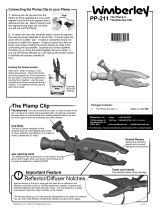 WIMBERLEY PP-211 User manual
WIMBERLEY PP-211 User manual
-
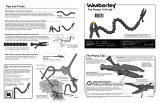 WIMBERLEY PP-200 User manual
WIMBERLEY PP-200 User manual
-
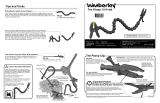 WIMBERLEY PP-200 User manual
WIMBERLEY PP-200 User manual
-
red lion LFIL User manual
-
Canon 5252B001AA User manual
-
ABB SACE Tmax XT User manual
-
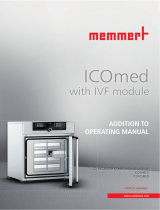 Memmert IVF module for ICOmed User manual
Memmert IVF module for ICOmed User manual
-
ON Semiconductor NCP1060 User manual
-
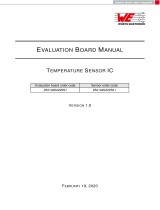 Wurth Elektronik 2521020222591 Operating instructions
Wurth Elektronik 2521020222591 Operating instructions
-
 Adolf Wurth GmbH & Co. KG RL 1-18 Quick Start
Adolf Wurth GmbH & Co. KG RL 1-18 Quick Start


























